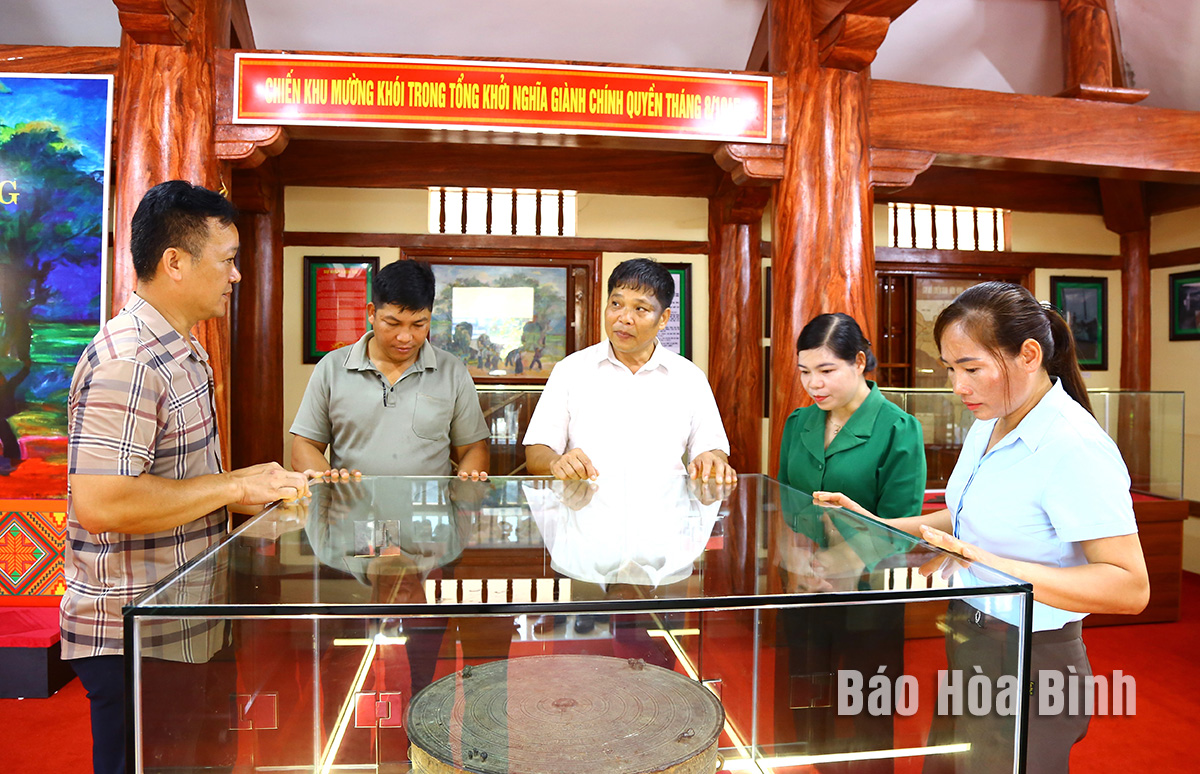
Lac Son district in Hoa Binh province is a treasure of cultural heritages, boasting 13 provincial-level relics and landscape sites. Of them, two are special national relic sites, namely the Xom Trai cave archaeological site and the Lang Vanh rock shelter, as well as one national relic site - the Muong Khoi Revolutionary Base. These landmarks reflect the region's rich cultural and historical significance.
The district is home to over 1,200 Muong gongs, which are an integral part of the cultural identity of the Muong ethnic group.
Additionally, there are approximately 18,640 traditional stilt houses scattered across the district, providing a glimpse into the region's architectural heritage.
Cultural life has thriven with 252 community arts groups and various clubs dedicated to preserving traditional music and crafts. These include 10 village-level folk singing clubs, a district-level Mo Muong club, and clubs for poetry, traditional folk singing and dancing, Muong gongs, and even a cooperative focused on traditional brocade weaving.
Lac Son is committed to preserving and promoting its unique cultural heritage while pursuing the "all people unite to build cultural life" movement. The district actively preserves traditional festivals and intangible cultural values, ensuring that these practices are not only maintained but also celebrated.
The district has made impressive strides in promoting cultural standards. Currently, 252 out of 271 villages and residential areas, or 92.9%, meet the cultural criteria. The district also upholds a commitment to social norms, with no new cases of social evils, third-child births, early marriages, or consanguineous marriages reported.
Notably, all 23 communes of the district have achieved the cultural criteria required for new-style rural areas, a testament to the community's dedication to enhancing the quality of life while preserving its cultural roots.
This achievement highlights the district’s successful integration of cultural preservation with modern rural development.
With an increasingly vibrant and widespread emulation movement aimed at building cultured residential areas and cultured families, Yen Thuy District has been making steady progress toward improving both the material and spiritual well-being of its people, while fostering a civilized, prosperous, beautiful, and progressive community.
Once lacking recreational spaces and community facilities, Residential Group 2 in Quynh Lam Ward (Hoa Binh City) has recently received attention for the construction of a new, spacious, and fully equipped cultural house. The project followed the model of state support combined with public contributions in both labor and funding.
The "All people unite to build cultural life" movement, which has been effectively integrated with Kim Boi district’s socio-economic development goals, is fostering a lively spirit of emulation across local residential areas, hamlets, villages, public agencies, and enterprises. In addition, through the initiative, traditional cultural values are being preserved and promoted, while community solidarity and mutual support in poverty reduction and economic development are being strengthened.
A working delegation of the Hoa Binh provincial People’s Committee led by its Permanent Vice Chairman Nguyen Van Toan on June 11 inspected the progress of a project to build the Mo Muong Cultural Heritage Conservation Space linked to tourism services in Hop Phong commune, Cao Phong district.
Born and growing in the heroic land of Muong Dong, Dinh Thi Kieu Dung, a resident in Bo town of Kim Boi district, in her childhood was nurtured by the sweet lullabies of her grandmother and mother. These melodies deeply imprinted on her soul, becoming an inseparable part of her love for her ethnic group's culture. For over 20 years, this love for her hometown has driven Dung to research, collect, and pass down the cultural values of the Muong people to future generations.
In the final days of May, the Ethnic Art Troupe of Hoa Binh Province organized performances to serve the people in remote, mountainous, and particularly disadvantaged areas within the province. These were not just ordinary artistic shows, but they were the meaningful journeys aimed at spreading cultural values, enhancing the spiritual life of the people and contributing to the preservation of ethnic minority cultural identities.



